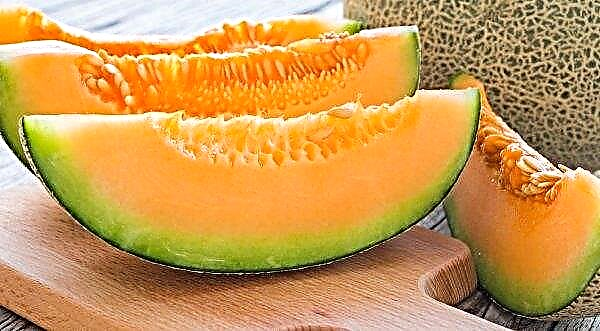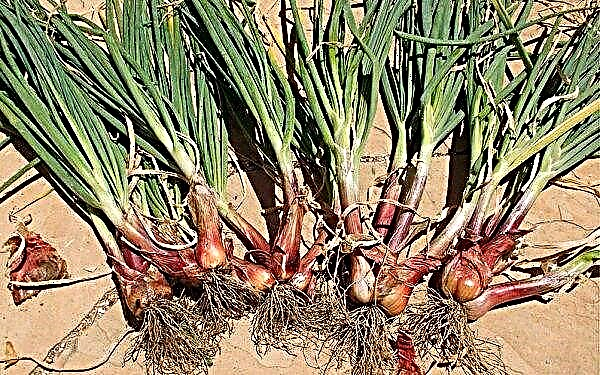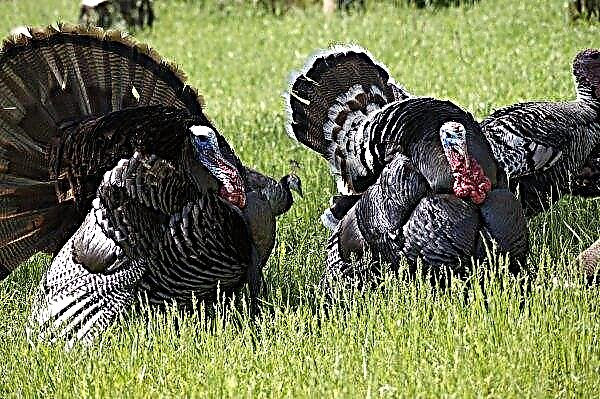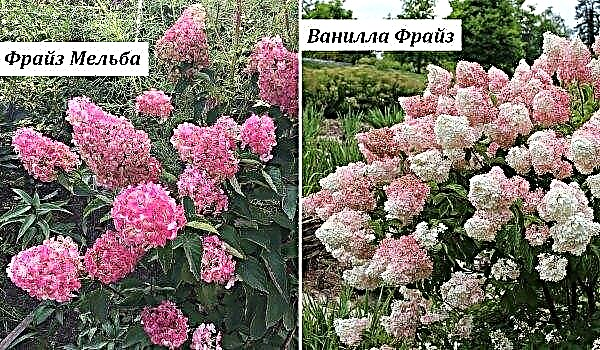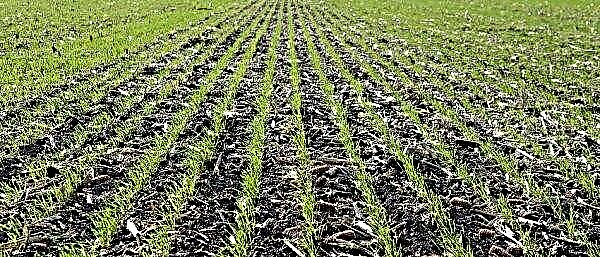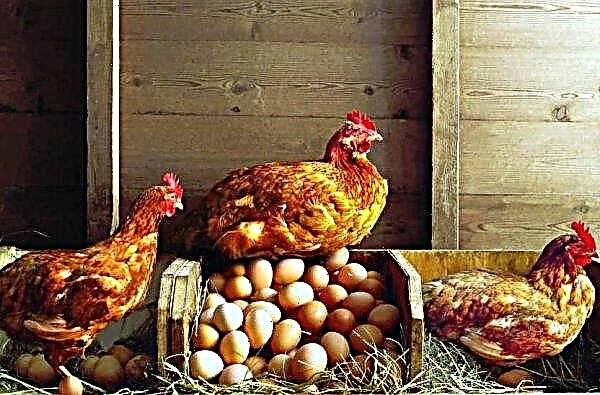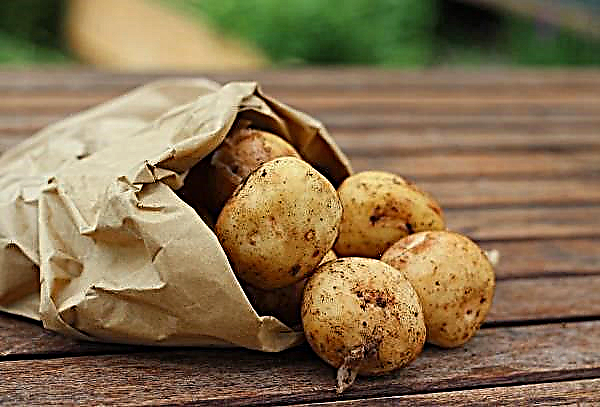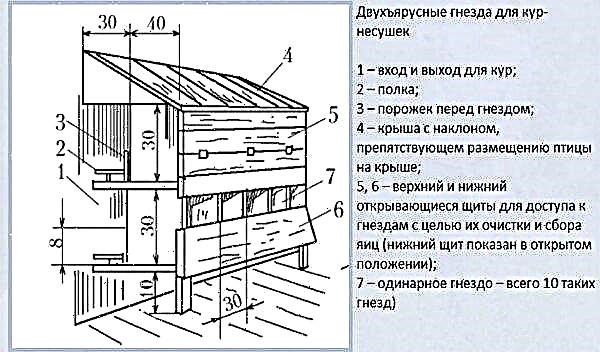Growing conifers in private areas is no longer news, so many gardeners prefer to plant not only fruit crops on the territory, but also different types of spruce or pine. The mountain variety was included in the list of the most sought-after plants of such a plan. What you should know about its cultivation, how to propagate and care for young plants - read on.
Features of mountain pine growth
Mountain pine is a coniferous tree with a dense, wide-pyramidal crown, with a diameter of up to 5 m. The average height of the plant is 7-8 m, it grows slowly, adding only up to 15 cm in height and up to 12 cm in width per year. Tree lifespan - 200-300 years, but each of the needles on the branches has not existed for more than 5 years (over time, they all turn yellow and fall off).
Breeding methods
If there is already one adult mountain pine tree on the site, then getting a few more will not be difficult, the main thing is to learn how to properly propagate the mother plant. This can be done in one of two ways: by seed or by cuttings, while observing a number of requirements for the procedure.
Important! The first cones appear on pine trees only by the eighth year of cultivation, so if you need a plant purely for decorative purposes, it is better to buy already adult seedlings, about 5 years old.
Seeds
The ability of mountain pine to reproduce by seeds is deservedly considered the most acceptable option for obtaining new, beautiful and healthy plants at home. When the procedure is performed correctly, all seedlings will retain their parental characteristics and will have a high decorative effect.
The step-by-step process of growing will look like this:
- To get started, prepare seedlings by arranging drainage holes at the bottom and filling the containers with a suitable soil mixture (the best solution is a light and loose substrate from the places of natural growth of mountain pine, slightly sprinkled with peat on top, protecting future plants from the development of fungal diseases).
- Dip the prepared seeds in a solution of Fitosporin or Fundazol and leave there for 10–20 minutes. for disinfection.
- Move the planting material into the prepared soil, deepening each seed no more than 0.5 cm (you can simply sprinkle them on the surface of the earth, only slightly sprinkling with the remaining soil). Between the "neighbors" be sure to leave 5 cm of free space.
- Sprinkle the plantings with water from the spray gun, cover the box with seedlings with plastic wrap and leave in a warm place.
- The first sprouts will appear after 14–20 days, after which the film can be removed and young seedlings watered, continuing to regularly perform this procedure using a spray bottle.
- Well-rooted seedlings are transferred to open ground not earlier than 1-2 years after sowing, without exposing the root system during planting.
 On the issue of the need for stratification of pine seeds before planting, gardeners cannot come to a consensus, and while some consider the influence of cold a good incentive for the rapid germination of planted planting material, others argue that such treatment only increases the likelihood of mold seeds.
On the issue of the need for stratification of pine seeds before planting, gardeners cannot come to a consensus, and while some consider the influence of cold a good incentive for the rapid germination of planted planting material, others argue that such treatment only increases the likelihood of mold seeds.
Did you know? The owner of the longest pine needles among its pine "relatives" is considered to be a swamp variety of a tree, with needles up to 45 cm in length.
However, if you don’t have a desire to take risks, you can just dry the seeds extracted from the cones well in a room environment, and then move the seeds into a humid environment for about 5 days to hatch the seeds (just wrap the seeds in a damp cloth, checking their condition regularly and preventing them from appearing mold). If you still decide to stratify the planting material, then after soaking in water, mix the seeds with sand (in a 1: 3 ratio) and send them to the cellar with zero temperature for another week, after which it remains only to sow them in prepared boxes.
If you still decide to stratify the planting material, then after soaking in water, mix the seeds with sand (in a 1: 3 ratio) and send them to the cellar with zero temperature for another week, after which it remains only to sow them in prepared boxes.
Cuttings
Cuttings are a widely used method of propagation of many garden trees, therefore it is not surprising that they are also often used in the cultivation of mountain pine. Usually this procedure is carried out in the spring, choosing in advance as a mother plant a young and completely healthy tree grown in private households, not in the wild. Suitable planting material in this case would be annual shoots growing vertically upwards. Cut 10-centimeter cuttings along with part of the tree to which it was attached (the so-called "heel").
Important! To save the prepared sections from a large amount of tarry deposits, it is recommended to soak them in water for about 3 hours, and then disinfect them using a weak solution of potassium permanganate or any purchased preparation suitable for these purposes.
The process of preparing and planting mountain pine cuttings will look like this:
- Place the disinfected section of the branch in a solution of Kornevin or another root stimulant for 12 hours.
- During this time, prepare the planting capacity by laying a drainage layer of small pebbles on the bottom and filling the soil mixture with equal proportions of turf land and sand.
- Properly handled stalk, move to the prepared box, deepening into the ground by 4-5 cm, 10 centimeters from the adjacent section.
- At the end of the planting, sprinkle the surface of the earth with water, cover the box with plastic wrap or glass, thus organizing a greenhouse (it is good if an additional heat source is installed under the boxes, such as a window sill above the battery or boxes with half-ripened compost or manure).
- Move the planting tank to a well-lit place.
 Given the long rooting period of almost all types of pines, do not disturb the cuttings with a transplant in the first year after planting the cuttings. It will be possible to transfer them to a permanent place of growth in open soil no earlier than next fall, provided that you plant segments in the spring of this year.
Given the long rooting period of almost all types of pines, do not disturb the cuttings with a transplant in the first year after planting the cuttings. It will be possible to transfer them to a permanent place of growth in open soil no earlier than next fall, provided that you plant segments in the spring of this year.
Video: propagate conifers cuttings
Germination Care
Pine is a photophilous plant, therefore, during the whole time of seed germination or rooting of cuttings, a box with young plants should be stored on the windowsill, slightly shading the sprouts from direct exposure to the sun. This is especially true for young seedlings, appearing approximately on the 14th day after sowing and characterized by a special tenderness of tissues. To prevent the development of diseases, once a week they can be sprayed with a light pink solution of potassium permanganate, simultaneously moistening the surface of the soil from the spray when it dries.
Soon after the next watering, loosening of the soil may be necessary so that the earth does not become crust. This procedure must be carried out as carefully as possible, using a toothpick as a tool, which slightly fluff up the soil in the aisles.
In the warm season, grown and stronger seedlings should be fed 2-3 times with special mineral mixtures for conifers. It is easy to find them in ordinary gardening stores (for example, the drug "Agrecol" or "Novofert"). Dosage and application features are always indicated on the packaging.
Landing site preparation
As soon as the young plant is well rooted and solidified in the seedling tank, it can be transplanted to the site, pre-selecting the most suitable place for this.
It is important to consider several criteria at once:
- moderate moisture content of the substrate (mountain pine does not tolerate wetlands);
- sufficient illumination of the territory;
- the availability of optimally suitable soil composition.
As for the last point, it is better to arrange a seat using a sand-clay mixture. The size of the pit will depend on the size of the rhizome of the plant (usually the footprint should be 2 times the volume of the container), therefore, on average, at least 15-30 cm should be added to the initial parameters.
A drainage layer of expanded clay or broken brick is laid at the bottom of the pit, on top of which a nutritious soil mixture of 3 parts of soddy soil, 1 part of peat and the same amount of river sand is poured. On depleted soils, it is useful to add 20-30 g of complex fertilizer to them and mix everything thoroughly. The transplant process is no different from similar actions when propagating other trees: by transshipment, a pine tree with an earthen lump moves from a closed container into a hole prepared for it, and the remaining space is covered with the remaining earth. At the end of planting, it remains only to condense the substrate in the near-trunk zone and water the pine plentifully.
The transplant process is no different from similar actions when propagating other trees: by transshipment, a pine tree with an earthen lump moves from a closed container into a hole prepared for it, and the remaining space is covered with the remaining earth. At the end of planting, it remains only to condense the substrate in the near-trunk zone and water the pine plentifully.
Video: planting a mountain pine
Young plant care
Care of young mountain pine in the open ground begins shortly after its transplantation to a constant place of growth and includes watering and top dressing the plant. If we are talking about a young seedling, then it is worth paying attention also to the correct preparation for the winter season, otherwise there is every chance that the fragile pine simply will not survive it. Each aspect of tree care has features that you should not forget about when cultivating it.
Did you know? The highest pines are deservedly considered trees of the Lambert variety, growing in North America. Many of them reach 70–80 m, which is comparable to the height of two 10-story houses.
Watering and feeding
Moistening the substrate is especially important for a young plant during rooting in open soil, therefore, during the first month after transplantation, it is worth moistening the substrate in the near-stem zone at least once a week. In the future, the frequency of irrigation can be reduced by focusing more on weather conditions and natural rainfall. Fertilizing plantations is also important in the first 3 years after transplanting to the open area, and ready-made mineral mixtures for conifers can be used as nutritional compounds. Of organic matter, only compost is a suitable solution, and even if it is well re-read. An excess of nitrogen in the earth is undesirable for conifers, and mountain pine is no exception in this matter.
Fertilizing plantations is also important in the first 3 years after transplanting to the open area, and ready-made mineral mixtures for conifers can be used as nutritional compounds. Of organic matter, only compost is a suitable solution, and even if it is well re-read. An excess of nitrogen in the earth is undesirable for conifers, and mountain pine is no exception in this matter.
Important! The most suitable period for fertilizing is the end of spring or the beginning of autumn, and when feeding plants twice a year, half of the mixtures introduced in spring should be used a second time.
With excessive compaction of the soil, gardeners recommend loosening, but only superficial, since the roots of the plant are very close to the surface, and they are easy to damage.
Video: fertilizers for conifers
Winter preparations
Winter cold is not terrible for mountain pine, and in the natural environment of its growth, it is able to easily endure even severe northern winters. However, immediately after transplanting to an open area, young seedlings still do not have time to grow stronger well, and the first frosts can adversely affect young branches.
To protect the seedlings, in preparation for the winter they are tied together and covered with spruce branches, which will prevent breakage from adhering snow and protect against frosty air. With the arrival of steady spring heat, the shelter needs to be dismantled, otherwise the branches can be blocked, which also threatens the development of fungal ailments.
In general, the reproduction of mountain pine is a doable task, and even a beginner gardener can cope with it. All that is required is a little patience and perseverance, and then in a year, cuttings or varietal seed material for planting will turn into a viable seedling of a young tree, which is suitable for further planting in an open area.

